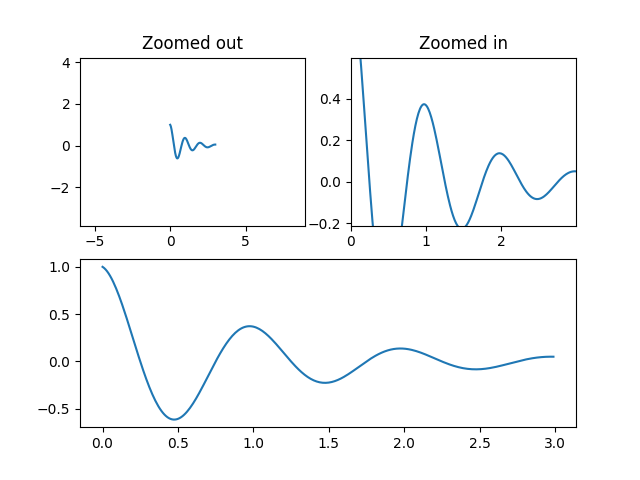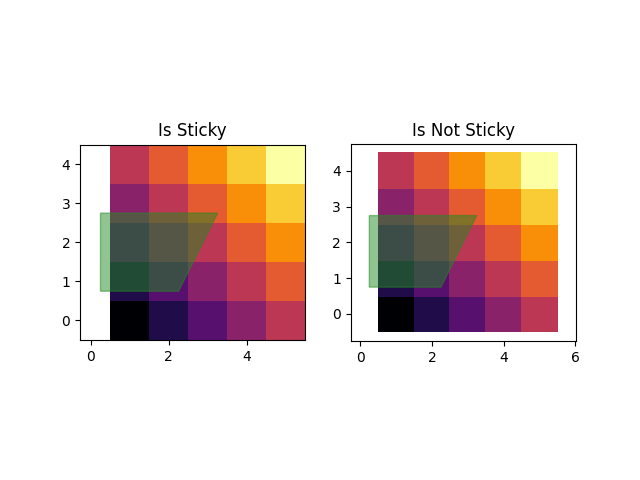注解
Click here 下载完整的示例代码
使用边距和粘滞边缘控制视图限制¶
本例中的第一个图显示了如何使用 margins 而不是 set_xlim 和 set_ylim . 第二个图展示了由特定方法和艺术家引入的边缘“粘性”的概念,以及如何有效地解决这一问题。
import numpy as np
import matplotlib.pyplot as plt
def f(t):
return np.exp(-t) * np.cos(2*np.pi*t)
t1 = np.arange(0.0, 3.0, 0.01)
ax1 = plt.subplot(212)
ax1.margins(0.05) # Default margin is 0.05, value 0 means fit
ax1.plot(t1, f(t1))
ax2 = plt.subplot(221)
ax2.margins(2, 2) # Values >0.0 zoom out
ax2.plot(t1, f(t1))
ax2.set_title('Zoomed out')
ax3 = plt.subplot(222)
ax3.margins(x=0, y=-0.25) # Values in (-0.5, 0.0) zooms in to center
ax3.plot(t1, f(t1))
ax3.set_title('Zoomed in')
plt.show()

论某些绘图方法的“粘性”¶
一些绘图功能使轴限制“粘性”或不受 margins 方法。例如, imshow 和 pcolor 希望用户希望限制在图中显示的像素周围。如果不需要此行为,则需要设置 use_sticky_edges 到 False . 请考虑以下示例:
y, x = np.mgrid[:5, 1:6]
poly_coords = [
(0.25, 2.75), (3.25, 2.75),
(2.25, 0.75), (0.25, 0.75)
]
fig, (ax1, ax2) = plt.subplots(ncols=2)
# Here we set the stickiness of the axes object...
# ax1 we'll leave as the default, which uses sticky edges
# and we'll turn off stickiness for ax2
ax2.use_sticky_edges = False
for ax, status in zip((ax1, ax2), ('Is', 'Is Not')):
cells = ax.pcolor(x, y, x+y, cmap='inferno', shading='auto') # sticky
ax.add_patch(
plt.Polygon(poly_coords, color='forestgreen', alpha=0.5)
) # not sticky
ax.margins(x=0.1, y=0.05)
ax.set_aspect('equal')
ax.set_title('{} Sticky'.format(status))
plt.show()

工具书类¶
本例中显示了以下函数和方法的使用:
关键词:matplotlib代码示例,codex,python plot,pyplot Gallery generated by Sphinx-Gallery